Ryan Wood: Trinity "most likely" a hoax
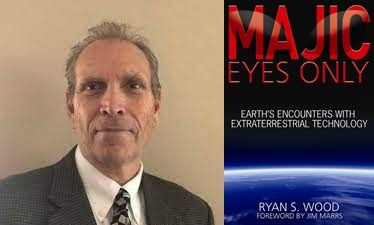
By Douglas Dean Johnson
Original publication: June 1, 2023
Ryan S. Wood, whose 2005 book Majic Eyes Only was the first book to describe the Trinity UFO Crash story, and who at that time rated the story as "medium-high...60-80%" on his credibility scale, now believes that the widely disseminated story was "most likely" a hoax.
In an interview conducted May 31, 2023, Wood commended my investigative journalism on the Trinity story, and said he found my treatment of his own involvement in the case "completely fair."
The full transcript and audio file appear at the bottom of this article.
Wood organized seven annual conferences on UFO "crash retrievals," starting in 2003. Remigio (Reme) Baca, the prime author of the Trinity story, accepted Wood's invitation to speak at the 3rd Annual Crash Retrieval Conference, held in Las Vegas on November 4-6, 2005. Baca cancelled not long before the conference, so Wood himself gave a presentation on the case, based mostly on a narrative document and set of PowerPoint slides that Baca sent him.
Early on during my January-April 2023 investigation of the case, I came across a press release put out by Wood in July, 2005, listing Baca as a booked speaker at the forthcoming conference. In addition, someone sent me a photocopy of a chapter about the case from Wood's 2005 book Majic Eyes Only: Earth's Encounters with Extraterrestrial Technology. This was the first book anywhere to describe the story (although a version of the story written by Ben Moffett had appeared in the Mountain Mail, a small weekly newspaper in Socorro County, New Mexico, in October-November 2003).
When I reached out to Wood in February, he was very responsive and helpful. He sent me a narrative document and PowerPoint slides that Baca had sent him prior to the November 2005 conference, as well as a video recording of Wood's actual presentation on the case.
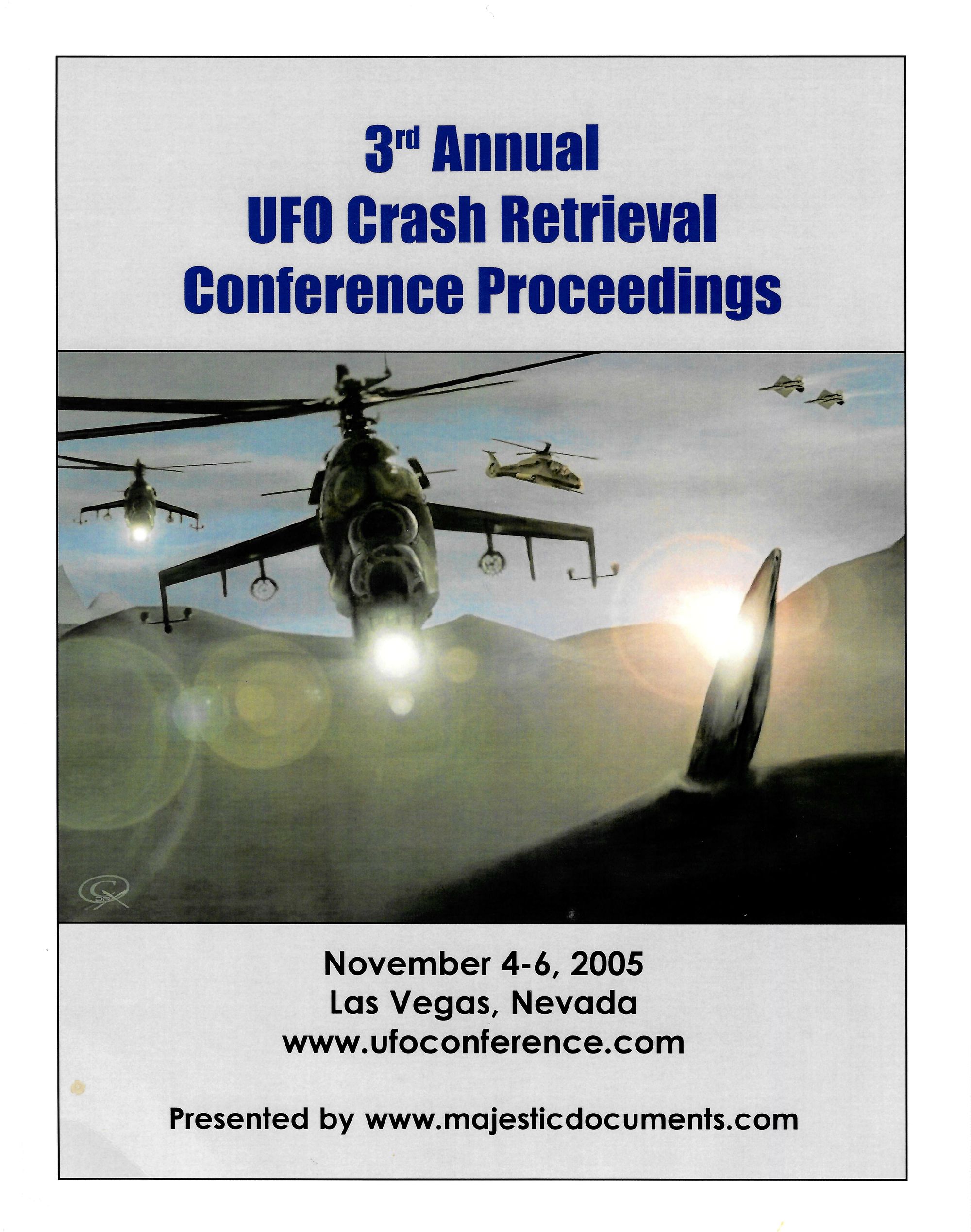
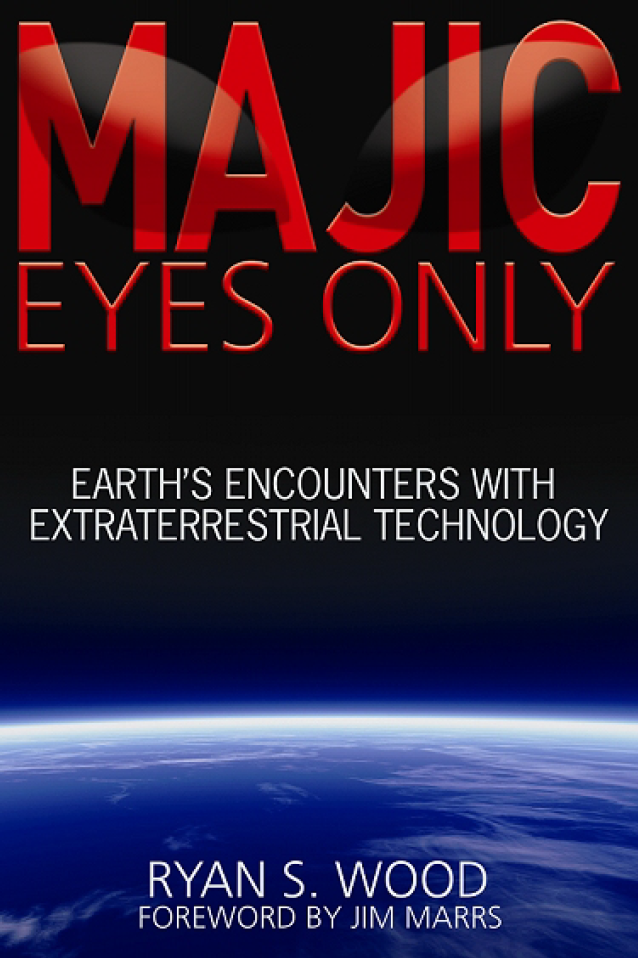
On May 1, 2023, I published a suite of articles based on my initial investigation of the Trinity tale, concluding and documenting that the entire story was a hoax by Reme Baca and his associate, Joseph Lopez (Jose) Padilla.
Two days later, Paola Harris, co-author of Trinity: The Best-Kept Secret, was a guest on the radio/internet program Coast to Coast AM. Asked a general question about "skeptics," Harris offered no substantive comment on any of my findings, but she did say this:
We're in good company. And then it was in Majic Eyes Only, Ryan Wood and Bob Wood's book Majic Eyes Only. It should be in every library... in Majic Eyes Only, there's 93 crash cases [actually 74 cases]. And Ryan Wood and Bob Wood dedicated two pages to it [actually six pages]. So if it wasn't real, I don't know what they, you know, why would they even put it there?
In a 5,000-word public memorandum issued on May 15, 2023, responding to my initial series of articles, Jacques Vallee wrote:
It [Johnson's critique] starts off by making fun of the fact that we spent so much effort on a case that had been summarily dismissed by well-known investigators such as Ryan Wood, Stanton Friedman and Timothy Good.
That first claim, which could have been easily ascertained, is simply wrong. Our book explains that Mr. Good did hear of the case but tried to follow-up in person without success. Stanton Friedman, as we also report, was intrigued by what he heard, but he told Mrs. Harris that all his time was taken by the Roswell business. As for Ryan Wood, he devotes no less than six pages to the case in his excellent analysis of UFO crashes, Magic Eyes Only. Hardly the work of a dismissive researcher, since it gave the case a rating of 60 to 80% credibility.
This was one of many passages in the Vallee memorandum that I found puzzling. In this particular instance, puzzling because it grossly distorted what I had actually written.
I had never even mentioned Stanton Friedman in my articles.
With respect to Timothy Good, I had written what I regarded (and still regard) as a straightforward summary of Good's treatment of the Trinity case, in his 2007 book Need to Know. I wrote:
Need to Know: UFOs, the Military and Intelligence (Pegasus Books, 2007), by Timothy Good. Good visited with Baca in Seattle, Washington, on June 6-7, 2004. Good apparently was not overly impressed, as he devoted only five paragraphs (pp. 27-28) of his 452-page book to the case. Good personally examined and photographed the “souvenir” (artifact) claimed to have been removed by Jose Padilla from the downed alien craft, observing, “It appears decidedly terrestrial...”
Adjacent to my summary, I embedded a PDF of the actual pages from Good's book, allowing readers to examine Good's entire five-paragraph treatment for themselves, if so disposed, and I do so again below. While Vallee might choose to summarize Good's five paragraphs differently, it is a distortion to say that I claimed that Good "summarily dismissed" the case.
Regarding the information and material that I received from Ryan Wood, I drew heavily on it. I described the conference-related events of 2005 and incorporated materials provided by Wood in three of the articles that I published on May 1: The Trinity UFO Crash Hoax; The Shifting Narratives of the Trinity UFO Crash and Recovery; and The Sources of the Trinity Tale.
With respect to Wood's 2005 book, I wrote:
Majic Eyes Only: Earth’s Encounters with Extraterrestrial Technology, by Ryan S. Wood (Wood Enterprises, 2005). Wood devoted six pages of his book to the San Antonio event—basically, the same narrative published under Baca’s name in the Proceedings of Wood’s November 2005 conference. In his book, Wood adopted a scheme of “five possible levels of authenticity” for crash-retrieval reports, based on a complicated point system. He rated the Baca story at the second-highest level of credibility “Medium-High...60-80%.”
So then: Far from suggesting that Wood in 2005 had "summarily dismissed" the case, as Vallee claimed, I had actually accurately reported that Wood had personally given a presentation on the case (using mostly materials provided by Baca), and that Wood had given the case a "Medium-High" credibility rating in his 2005 book. Moreover, I embedded a PDF file containing the complete chapter on the "San Antonio, New Mexico, USA, 1945" case from Wood's book. (The book itself is long out of print, and difficult to obtain.) Here again is Wood's 2005 chapter on the case:
(By the way, when I make a substantive change to any of my articles after publication, whether an update or a correction, I make a notation in a dated log that is visible to readers at the end of each article– no "stealth edits." So far, I have seen no cause to edit anything I wrote with respect to Wood or Good, and again, I never even mentioned Friedman.)
A few days after after my articles appeared on May 1, I emailed to Wood links to a couple of my articles and a summary of my conclusions. He responded, "Glad to be of help Doug. Looks like when a reprint my book (one of these days) I will need to update the chapter on the ’45 Baca San Antonio crash with your new findings. Thanks for the investigations."
On May 17, after Vallee's critique of my articles had been published, I phoned Wood. He affirmed that my descriptions of his involvement were accurate, and he commended my investigative reporting. Later, I emailed Wood to ask him to again review all of three of my articles that cited his activity or the material that he had provided, and also to read a new article that I'd published on May 20, 2023, Crash Story File: The Reme Baca Smoking-Gun Interview. We agreed to do a recorded interview after he had reviewed those materials, at a mutually convenient time, which occurred on May 31, 2023.
Key points from the interview:
● Regarding my treatment of his 2005 involvement with the Trinity case, and the materials he provided, Wood said, "I thought the treatment was completely fair."
● Regarding my findings, Wood said, "I'm happy with the snapshot of this case that I created in 2003 and 2005, but it was clearly incomplete. And you've completed it.... This is what investigative journalism is all about, and particularly important when it deals with something so eyebrow-raising as crash retrieval." Wood also said, "You, Doug, have done a much richer and more masterful job of investigating this story and pulling out the inconsistencies and finding all sorts of good primary sources to compare and contrast."
● After reviewing my May 20 article Crash Story File: The Reme Baca Smoking-Gun Interview, and the substance of the Reme Baca interview by Tom Carey in late 2002 or early 2003 (in which Baca told a story of a childhood UFO encounter very different from the public story that emerged in late 2003), Wood believes the "most likely" explanation "is what you've concluded—and that is, a hoax...[to] try to leverage the buzz of Roswell and the Santilli film and Independence Day and all the milieu of modern culture around crash retrievals at that time."
Wood regards as a less likely "possibility" that the story that Baca told to Carey was the truth, but that "the second story is made up" – that "second story" being the one that has been told to the world since October, 2003. Wood also regards it as possible but very unlikely that Baca was a government-inspired agent of disinformation, deliberately seeking to sow confusion. I note that under any of the three possibilities contemplated by Wood, the story that millions have heard through the Vallee-Harris book is a made-up story.
Those who have followed the Crash Story Files already know my own view: There is now abundant evidence (as opposed to undocumented narratives), all pointing to only one viable explanation: A pre-meditated hoax by Reme Baca and Jose Padilla.
INTERVIEW TRANSCRIPT
The transcript of the May 31, 2023 interview of Ryan S. Wood by Douglas Dean Johnson appears below, and is also embedded here as a PDF file:
The audio file of the May 31, 2023 interview of Ryan S. Wood by Douglas Dean Johnson (.m4a file) is embedded below. If you have any difficulty playing it, you can also download the file from this link (the file is about 18 mb). The interview is about 19 minutes in duration.
The following interview was recorded by telephone on May 31, 2023. This transcript has been very lightly edited for readability.
Douglas Dean Johnson: Okay. I'm starting the recording now. It is May 31st, 2023, 3:15 PM Eastern Daylight Time. I'm Douglas Dean Johnson, and I have on the line with me Ryan Wood. Ryan, I'm recording this for possible publication. Do I have your permission to record this interview?
Ryan S. Wood: Yes, you do, Doug. I'm looking forward to it.
Douglas Johnson: All right. Ryan, you organized a series of conferences on crash retrieval accounts. I believe these started in 2003, is that correct? How many of these did you organize?
Ryan Wood: Organized seven UFO crash retrieval proceedings, and I think I started in 2003-- that's right. All of them were in Las Vegas. The goal was really to focus in on what I thought was the most important aspect of the UFO phenomena, and that was crashed UFO hardware. As part of that process, it became clear that nobody had done a book dedicated to UFO crashes and retrievals, which was what I decided to do in 2005. Published Majic Eyes Only: Earth's Encounters with Extraterrestrial Technology, with a forward by the now-deceased Jim Marrs. I went through 74 UFO crash retrievals, and generally contacted all the experts that I could, that were researching these particular cases. That's where I first came across the Reme Baca story and the San Antonio 1945 UFO crash.
Douglas Johnson: Okay. So, that particular story first became public, in the form that most people have heard it, in late October of 2003 in a small newspaper in Socorro County, New Mexico [the Mountain Mail, editions of October 30 and November 6, 2003, in stories written by Ben Moffett]. That was the first publication of it. So what happened after that? Did those particular stories come to your attention?
Ryan Wood: Yeah! I think I saw the Mountain Mail story in 2003. I had it in one of the many folders of crash retrieval cases, and then began doing some investigation in it, and contacted Reme Baca, and ultimately wanted to have him come and tell his story firsthand to our crash retrieval conference. Which is typically what I do--I have the lead investigator or the lead witness come and present their story, typically 45 minutes to an hour and 15 minutes, a PowerPoint, Q&A, in a public setting that's being videotaped. We also did conference proceedings, which had their written accounts as well. Some did a better job than others. Some just reprinted their PowerPoint slides. But that was the general arc and approach that I used in managing and organizing these crash retrieval conferences.
Douglas Johnson: Okay. So you were reaching out to Reme Baca in preparation for the 3rd Annual Crash Retrieval Conference, to be held in November 2005. Could you summarize your interactions with Reme Baca then?
Ryan Wood: I think there were a couple of phone calls to him, one to sort of hear the story and get a sense of what was going on. He did mention that Timothy Good had interviewed him, who I respected a great deal, and that Timothy Good had paid for analysis of his part, his alleged crashed material [the bracket or artifact]. And I think Tim was somewhat upset that he wasn't able to use that in his book in a more robust way.
But I had a conversation with Reme, and then I probably had another conversation to coordinate his plane flight to Las Vegas to the conference.
At some point close to the conference, maybe a week or two out, he called and canceled and said he couldn't make it. I've forgotten the exact reason, but it seemed credible at the time. But nevertheless, I'm out 500 bucks for airplane tickets--and back then, that was real money. And the honorarium. I typically paid all the speakers anywhere from 300 bucks to 800 bucks, depending upon their cachet, so to speak, or their ability to draw a crowd or interest.
Douglas Johnson: So he sent you a Word document and also some PowerPoint slides, and you ended up giving the presentation using those materials. Is that correct?
Ryan Wood: Yeah. Yeah, it is. I ended up giving the presentation for him, which was videotaped, and I think I sent you a copy of it.
I think my presentation of his story was fairly neutral, and I didn't advocate very strongly that this was really the real deal. But I was impressed by the fact that we had a couple of witnesses, although I never really talked to Jose [Padilla], only Reme. We had the story in the Mountain Mail, and it looked, at first blush, like an intriguing start to the investigation. You, Doug, have done a much richer and more masterful job of investigating this story and pulling out the inconsistencies and finding all sorts of good primary sources to compare and contrast. And that's very important and is one of the key principles of my book, is that every crash retrieval starts out in a neutral sort of range. And as you fully investigate everything and run down all the leads, the needle of authenticity can move lower or higher. You've clearly investigated many different avenues that I didn't and wasn't exposed to back in 2005, when the book went to print. And now the credibility, in my mind, of this case is clearly lower. I think I originally pegged it at “medium-high,” and I would now peg it “medium-low,” at least down two notches.
I mean, the ratings are low, medium-low, medium, medium-high, and high. There's actual metrics that go with those various rankings and ratings. So that's outlined in my book.
Douglas Johnson: Spelled out in your book, Majic Eyes Only.
Ryan Wood: Yes.
Douglas Johnson: Based on my three-month investigation, I published a batch of articles on May 1st [2023], concluding and, I think, documenting that this was a conscious hoax on the part of Reme Baca and Jose Padilla, from which they hoped to profit. Not everybody was persuaded. Jacques Vallee on May 15th published a 5,000-word public memorandum in which he contested various things. He contested some things I hadn't actually said or the opposite of what I'd said. But he also contested a number of things that I did say.
One of the things, though, that puzzled me was he [Vallee] said, and I'm quoting now from that memo, that my critique, quote, "starts off by making fun of the fact that we spent so much effort on a case that had been summarily dismissed by well-known investigators such as Ryan Wood, Stanton Friedman, and Timothy Good." And this puzzled me because, first of all, I never mentioned Stanton Friedman. I did summarize Timothy Good's treatment of the case in his book. I think I did it in a straightforward manner. He [Good] only devoted a couple of pages to it in a very thick book.
I did cite your material in three of my articles, and you've reviewed that. Do you think I treated your material fairly? Did you sense anything that--
Ryan Wood: No. No, I thought the treatment was completely fair.
I mean, I'm happy with the snapshot of this case that I created in 2003 and 2005, but it was clearly incomplete. And you've completed it. Getting primary sources about his military record and from the Hoover Institute and from other witnesses and sources is great. This is what investigative journalism is all about, and particularly important when it deals with something so eyebrow-raising as crash retrieval.
Douglas Johnson: Let me ask you about one other aspect now. When Dr. Vallee issued the 5,000-word response to my initial articles, I had not yet received something that came into my hands very shortly after that, which was a recording of a 30-minute interview of Reme Baca by Tom Carey, who was at that time [in late 2002 or early 2003] a prolific writer on matters related to the Roswell incident. And Reme Baca reached out to him to, I would say, pitch a story, or tried to engage Tom Carey, in what Reme Baca represented as his personal childhood account. With full knowledge that this was a recorded interview, they talked for half an hour [on the recording]. And the remarkable thing-- and this is my characterization now, you've seen my article that I published on May 20th about this recording—it [the story Baca told Carey in late 2002 or early 2003] bore little in common with the story that we all heard starting in [October] 2003.
Certainly, the same two young boys involved, the same two protagonists, the same general locale-- but in every other key aspect, I would say, a different script. The two boys in a different year--1946 instead of 1945-- go off on a different mission. In this story that Reme Baca told to Carey, they decided to go visit Ground Zero, where the first atomic bomb was set off. They go in a pickup truck, not on horseback. They say nothing about hearing any kind of a crash. But they stumble across, you might say, a UFO or alien craft, but it's of a completely different type--it's a giant disk. They come back the next day, but different characters do different things [compared to the later public story]. And finally, they obtain the alien artifact in a completely different manner, in this story that Reme Baca told to Tom Carey.
Now, Tom Carey decided he didn't believe the story, and he threw the cassette in his filing cabinet and thought nothing more about it. Reme Baca did send him a photograph of the alien artifact, and it's the same one that figured in the later story, the story that was published by Ben Moffett in October of 2002 [Johnson misspoke here; meant to say “October of 2003”], and the one that now has been presented to millions through the book [Trinity: The Best-Kept Secret] by Vallee and Harris.
So what do you make of this, where Reme Baca is on the record presenting as his own childhood experience, shared with Jose Padilla, two completely different scripts, which really have little in common other than the two main characters and the locale? How does that admit of any conclusion other than a conscious hoax?
Ryan Wood: Well, it's certainly troubling. I mean, the possibilities are threefold.
I mean, it is a conscious hoax-- that's one thing. For what end, and what's the motivation? Fame, money, et cetera.
I suppose the other scenario is that the original story told to Tom Carey is more accurate and may be truthful, but the second story is made up. There have certainly been a lot of crashes around the Trinity site, from the two events that occurred in very close to the Trinity site, at the Roswell time frame in July 3, 4 [1947]. So that's another possibility.
And then, the final scenario is that this is some sort of deliberate, active misinformation or disinformation effort spawned by the intelligence community to discredit UFO crashes and investigations around that. But I think that's particularly remote and unlikely, given the time frame and the lack of credibility that Baca and Padilla presented. If you were really trying to fool somebody, you'd have a very highly credible, consistent story that is unassailable, to enhance the vigor of the disinformation. So this is my three perspectives on what's going on, as it stands today.
Douglas Johnson: Okay. So the final question, then: Weighing the evidence you've seen to date, which of the explanations do you think is the most likely, in your mind?
Ryan Wood: Well, the most likely, in my mind, is what you've concluded—and that is, a hoax, or a veiled attempt or a poor attempt to try to extract money and fame and create a confabulated crashed UFO story, and try to leverage the buzz of Roswell and the Santilli film and Independence Day and all the milieu of modern culture around crash retrievals at that time.
Douglas Johnson: Well, I think that exhausts all the questions I had in mind. Is there anything you wanted to add? If not, we'll conclude this interview.
Ryan Wood: No, I think that's great.
Douglas Johnson: All right.
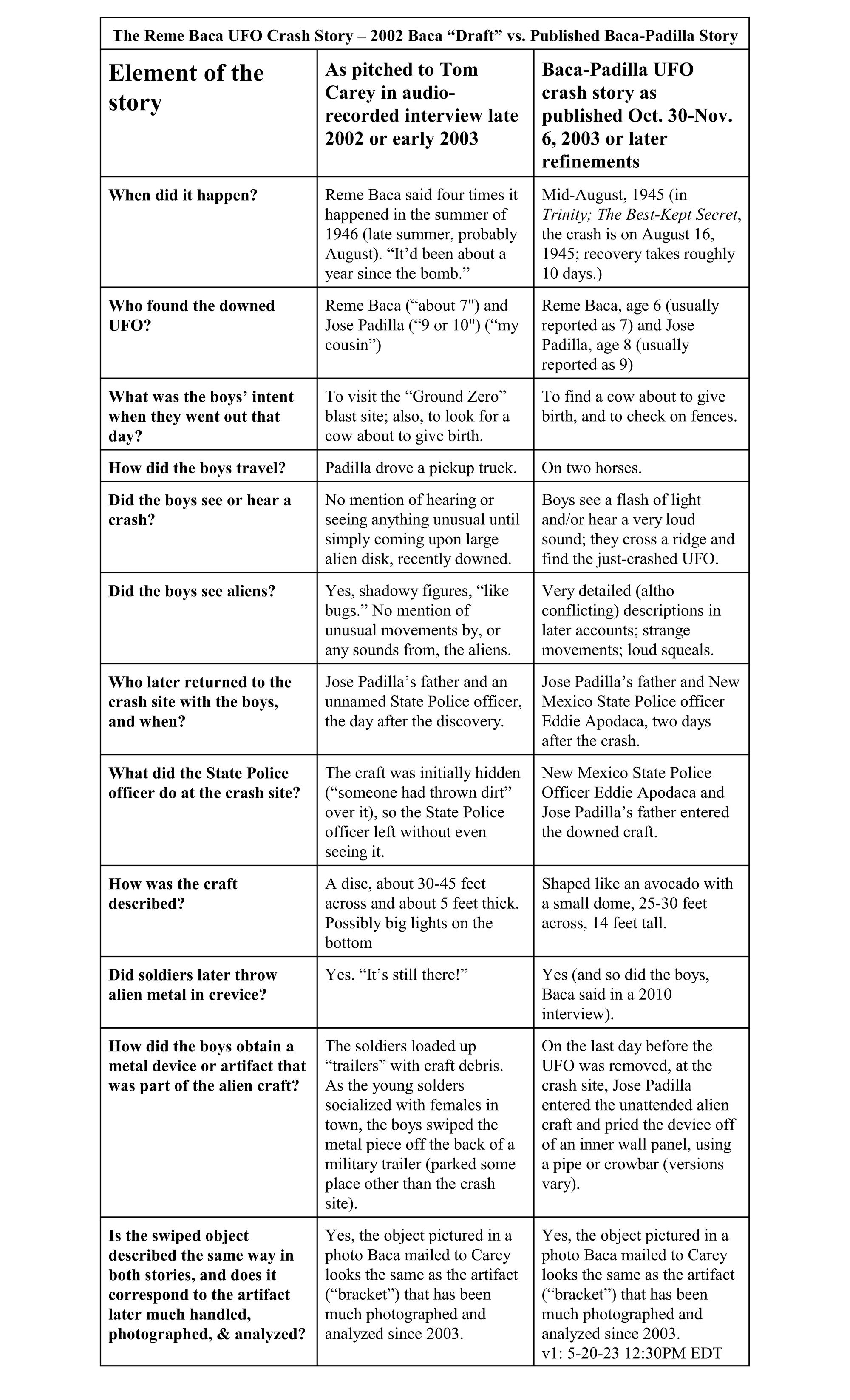
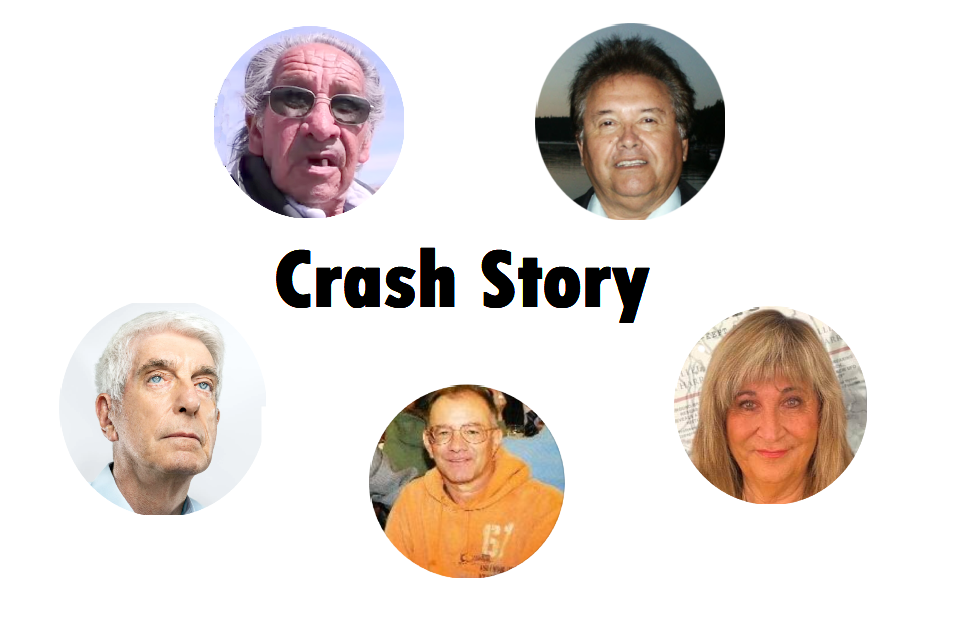
SUBSTANTIVE REVISIONS SINCE THE ORIGINAL PUBLICATION OF THIS ARTICLE ON JUNE 1, 2023
(1) June 10, 2023: The article above refers to a public memorandum by Jacques Vallee, dated May 15, 2023, which criticized various aspects of my original suite of articles about the Trinity UFO-crash hoax. (My original batch of articles had been published on May 1, 2023.) As originally published, the article above linked directly to the Vallee memo on the website of Paola Harris, co-author of Trinity: The Best-Kept Secret. However, on or around June 8, 2023, the Vallee memo disappeared from the Harris website, without explanation. Therefore, I have revised the article above to link instead to a PDF version of the Vallee memorandum, which I had printed from the Harris website on May 17, 2023.